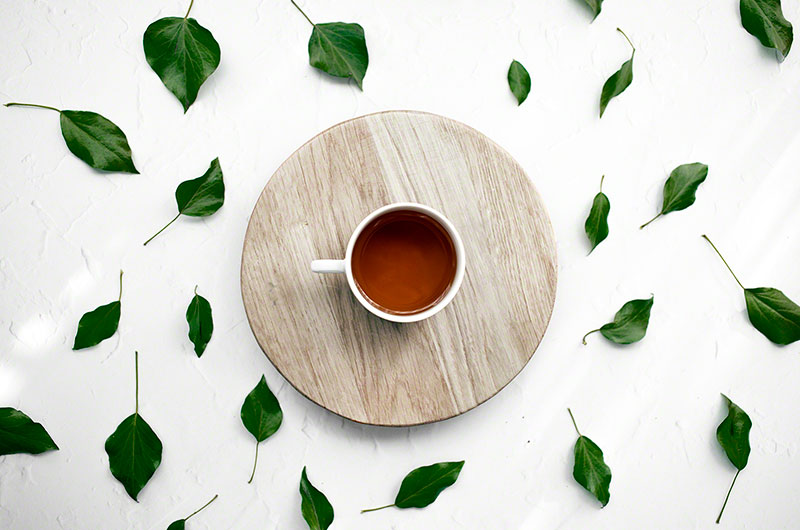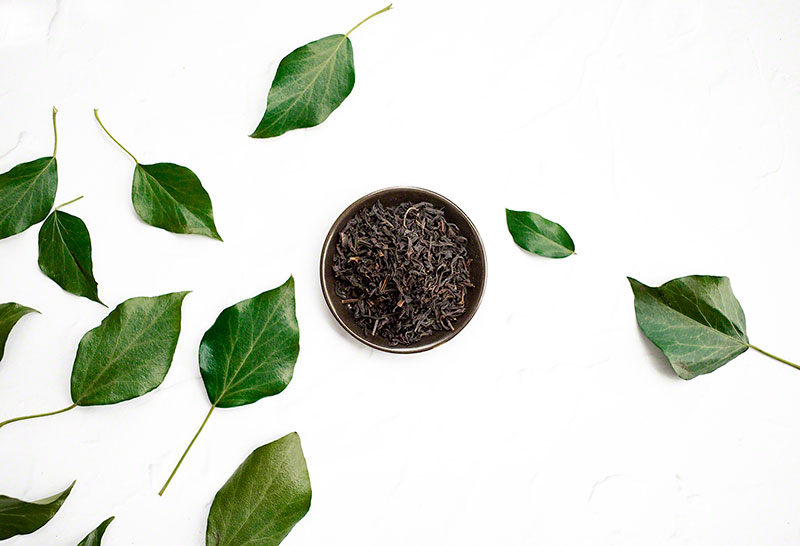Russian Caravan Tea: Taste, Caffeine, History & Where to Buy?
Russian Caravan is a blend you either love or hate. Some tea drinkers may avoid Russian Caravan because of a blend they once tried and didn’t like. However, if you start judging every Russian Caravan by that one cup you didn’t like, you may miss out on some great blends. Why?
Just like all other blends, every Russian Caravan tea is different. Every blend will have a different flavor and will be blended with different teas–including black, oolong and pu’erhs.
What exactly is Russian Caravan, what flavor to expect and how to brew it?
What is Russian Caravan tea?
Russian Caravan is a black tea blend made from different black tea types, or black and oolong teas. The name comes from camel caravans that were transporting tea along ancient tea routes in the 18th century, from China to Russia and Europe. While Earl Grey always contains bergamot, and English Breakfast always needs to be full bodied with a specific flavor profile, Russian Caravan doesn’t need to have any of that. Why?
Think of a Russian Caravan as a blend that should contain a mix of all those teas that were once transported into Europe and became a staple in European households – mostly Assam, Keemun, Lapsang Souchong, Pu’erh and Formosa oolong. Russian Caravan will never include white, yellow or green tea, only those that were more oxidized, fermented, smoked or roasted. Those teas were more likely to survive long transport and harsh climate conditions.
Even modern Russian Caravan teas still contain only those tea leaves that are coming from tea producing countries with a strong tea tradition – Mainland China, Taiwan, India, Sri Lanka and Nepal. They won’t include rare or experimental teas from countries such as Australia or Germany.
Which teas are in Russian Caravan blend?
Traditionally, Russian Caravan tea was made with Chinese black and oolong teas. The most popular tea for the blend, but not always present, is Lapsang Souchong. Lapsang Souchong is a unique Chinese black tea with a distinctive smokey flavor. However, it’s important to know that not all Lapsang Souchong teas are smoked over the pine wood. Some are not smoked at all, and others may be smoked over other types of wood, or even unsmoked and made with artificial flavors.
Original Russian Caravan teas were made with Chinese teas, but today, blends can include other types like Assam, Nepalese, Darjeeling or Ceylon tea. Oolongs included in the blend are usually Formosa oolong or greener Fujian ball-shaped oolong teas. Wu Yi rock tea or any other stronger darker oolong may be suitable for blending into a Russian Caravan tea as well and some blends may even contain dark pu’erh tea too.
Russian Caravan is not a flavored tea, and it should never contain artificial or natural flavors, or other fruits, spices or herbs. The only ingredients should be real pure Camellia sinensis teas, at least two or more different types.
How much caffeine is in Russian Caffeine tea?
Caffeine content of Russian Caravan blends is usually moderate to high. Expect anywhere between 20 to 60 mg of caffeine per cup, although the exact amount of caffeine will depend on:
- Teas used in the blend – Full leaf Darjeeling tea may give more caffeine than full leaf Assam tea[1] and Assam dust may give 3 times more caffeine than full leaf Assam tea
- How long you steep the tea – the longer you steep it, the more caffeine you are likely to extract
- How hot is the water you use for brewing – you will extract more caffeine with boiling water
If you are sensitive to caffeine or want to reduce/avoid it, but still want to try Russian Caravan tea, opt for a decaf blend.
How does Russian Caravan taste like?
Usually, Russian Caravan will taste like a light Lapsang Souchong with a light pine smoke note, and a bit more maltiness, depth and sweetness than pure Lapsang Souchong. However, the flavor will depend on all the teas in the bend. For example, some Lapsang Souchong teas don’t have a smoke note at all. Some Russian Caravan teas contain oolong tea that will add another layer of notes to your cup. Some may have a stronger smokey note, but never as strong as the pure smoked Lapsang Souchong. To know what to expect, always look at the ingredients:
- expect a smokey note, even a light spicy note if there is a smoked Lapsang Souchong in the blend
- it’s likely the tea will be sweeter with malty notes and hints of ripe fruits if there is no Lapsang Souchong in the blend,
- If it contains oolong tea, it can have different notes – from light floral notes to hints of honey and ripe fruit
- expect a light, earthly note if it contains pu’erh tea
How to brew Russian Caravan tea?
Russian Caravan is easy to brew and it should give a full-bodied infusion. If your blend contains smokey Lapsang Souchong, it may be best to avoid adding milk – unless you really enjoy it. Less smokey and sweeter blends like Sweet Russian Caravan go very well with a splash of milk and a teaspoon of honey.
- Boil fresh spring water in a clean kettle
- Preheat your mug and a teapot by pouring hot water in and out
- Use 1 teaspoon of tea leaves per cup of water (2-3 grams)
- Add nearly boiling water and cover with a lid
- Let it steep for at least 2-5 minutes
- Strain and add sugar or even milk if needed.
To get the best flavor from any tea, always use fresh spring water. Hard tap water is likely to ruin the flavor and cover all delicate notes. On the other hand, distilled water may give a flat, uninteresting brew.
Where to Buy Russian Caravan tea?
Russian Caravan tea is available in many convenience stores and online tea shops. Being a tea with history and tradition, it’s available in both tea bags and as a loose leaf tea. You can even make your own blend of Russian Caravan tea by blending Chinese Keemun tea with Lapsang Souchong, with or without adding oolong tea.
Disclaimer: This article is for informational purposes only. It’s not intended to replace medical advice, diagnosis or treatment. Every person is different and may react to different herbs and teas differently. Never use teas or herbs to treat serious medical conditions on your own. Always seek professional medical advice before choosing home remedies.





